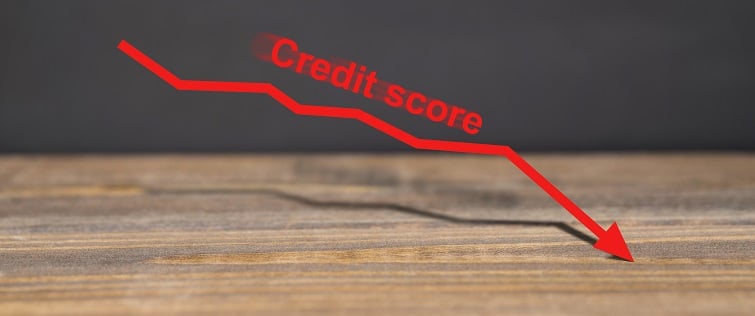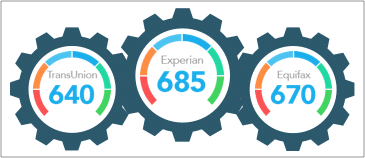Millions of Americans could see their FICO scores drop later this year. That’s because Fair Isaac, the credit scoring company behind the widely used FICO score, is overhauling the way it assesses risk, lowering some credit scores and raising others by about 20%.
Starting in summer 2020, lenders will be able to access FICO Score 10 Suite, which is an enhancement to its credit scoring algorithms. FICO says lenders can reduce default rates by as much as 9% for new auto loans and 17% for mortgages using FICO 10.
That’s welcome news to the financial industry, especially if the economy slows, but for people who have increasing debt balances or missed loan payments, it will be harder and more costly to borrow money.
Missed Payments Will Matter Even More
Under the new system, consumers with FICO scores below 600, who continue to exhibit bad financial behavior, will see their credit scores take more of a hit than with the previous FICO versions. Consumers with FICO scores of 680 or more, who manage their finances responsibly, will see their credit scores rise. As a result of the changes, millions of Americans will be impacted either positively or negatively.
FICO 10 T, another new version, places more weight on missed payments over the past 24 months. Consumers who’ve recently missed payments or stopped paying them altogether will be punished more severely. Consumers whose last missed payment was a year or more ago could see a lift in their scores.
“There’s a group that is going to suffer a little more because of the changes and a group of consumers who will be rewarded a little more,” says Bruce McClary, spokesman for the National Foundation for Credit Counseling. “The average impact is within a 20-point range. For people who are at the bottom end of the scores, it’s fairly disastrous.”
The new scoring system also places more weight on consumers who have personal loans and exhibit credit-damaging behavior. For example, those who take out a personal loan to consolidate credit card debt, only to rack up more of it, will be penalized more harshly.
Lenders Are Getting Nervous
Credit scoring companies regularly upgrade their scoring systems, but FICO’s move is a departure for how the industry has behaved in recent years. With lenders on the hunt for new borrowers, credit scoring companies have been making it easier for consumers to increase their scores. They’re including bank accounts and utility payments when calculating risk and excluding some forms of debt in their scoring. When FICO made changes six years ago, the consensus was that it helped to increase credit scores, not reduce them.
But the economy was different in 2014. Today the United States has seen more than 10 years of economic growth, leading to concerns that things are poised to slow.
At the same time, U.S. consumer debt is at a record high of $14 trillion, making lenders uneasy. Losses from loans haven’t been a problem, but a slowing economy and consumers’ reliance on debt could make it an issue in the future. A more stringent credit scoring system will weed out the less-creditworthy borrowers.
“These changes can certainly help lenders in a situation where the economy takes a turn for the worse,” McClary says. “That’s when lenders want to be more careful with the lines of credit they are approving.”
You Have Time To Act
While FICO’s changes go into effect in mere months, consumers don’t have to worry about it impacting them any time soon. Experts say it could take months or even years before most lenders are using it, if even then. Lenders aren’t obligated to use the latest version of the FICO score when underwriting loans. Many are using versions today that are a couple of iterations old. That gives consumers with low credit scores plenty of time to prioritize improvements.
A great place to start is to check your credit reports from all three credit reporting agencies: TransUnion, Experian and Equifax. Your reports are the raw material fed into every credit score algorithm, whether that algorithm comes from FICO, VantageScore or another company. Once you know the information fed into the score algorithm, then learn the factors the algorithms apply to influence your credit score. Address the issues that have the biggest impact on your credit score first — such as late payments.
“The single biggest factor with your FICO score is account history, including payment history,” McClary says. “Getting your accounts up to date takes care of 35% of the [FICO] credit score.”





